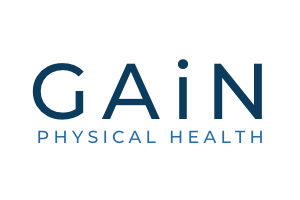We used to think that pain was a sign of tissue damage and that the level of pain we experienced was directly associated to the amount of tissue damage we had. However, in 1995 there was a case reported in the British Medical Journal that highlighted the need for us to look at pain from a different perspective, here’s the story…
 A man arrived into the emergency department in severe pain after jumping on a 6 inch nail which had pierced all the way through his boot. However, when the doctors removed the boot the nail had passed perfectly between his toes and hadn’t left a mark. Upon seeing that the nail hadn’t caused an injury his pain magically disappeared. This made us question what exactly pain is and what its purpose is, if not related to tissue damage. The simple answer is that pain is an output from the brain designed to PROTECT US from potential or actual harm and research also tells us, that we can sustain tissue damage without experiencing pain (think of a soldier who is unaware they have been shot in combat).
A man arrived into the emergency department in severe pain after jumping on a 6 inch nail which had pierced all the way through his boot. However, when the doctors removed the boot the nail had passed perfectly between his toes and hadn’t left a mark. Upon seeing that the nail hadn’t caused an injury his pain magically disappeared. This made us question what exactly pain is and what its purpose is, if not related to tissue damage. The simple answer is that pain is an output from the brain designed to PROTECT US from potential or actual harm and research also tells us, that we can sustain tissue damage without experiencing pain (think of a soldier who is unaware they have been shot in combat).
Using this story as an example, we can theorise that when the nail penetrated his boot, the mans visual senses; seeing the nail penetrate his boot and his co-workers responses, caused his brain to make a very reasonable calculation that this was a bad situation and that his foot was in danger, therefore creating a very real pain response to protect him.
Why is this important to know? Most of us are led to believe that pain is a direct sign of tissue damage and we become protective of the pain sight, meaning we stop moving, we rest more and we become fearful of movement. However, in most cases, research demonstrates that movement often helps.
A PAIN problem is very different to a TISSUE DAMAGE problem. If there is one thing that is reliable in musculoskeletal injuries, it’s that the tissue injury will eventually heal; a broken bone will heal, a cut will heal, a sprain will heal. What is less predictable is the amount of pain you will personally experience and how long this will last for.
We now contextualise pain within the Biopsychosocial model, which means we know pain is affected by:
- Biological factors (e.g. a headache or hangover and an actual tissue injury such as a broken bone)
- Psychological factors (e.g. fearing or believing that movement will cause more damage)
- Sociological factors (e.g. feeling under stress due to work or personal issues causing us to have less tolerance)
ALL of these factors pose a threat to us, so our nervous system outputs PAIN as a mechanism to protect us.
This knowledge opens up a host of opportunities for people experiencing CHRONIC PAIN. We now know that if the pain has been there for a long time, it’s much less likely to be a tissue problem.
For more information about us and how we can help you with pain, click here.




